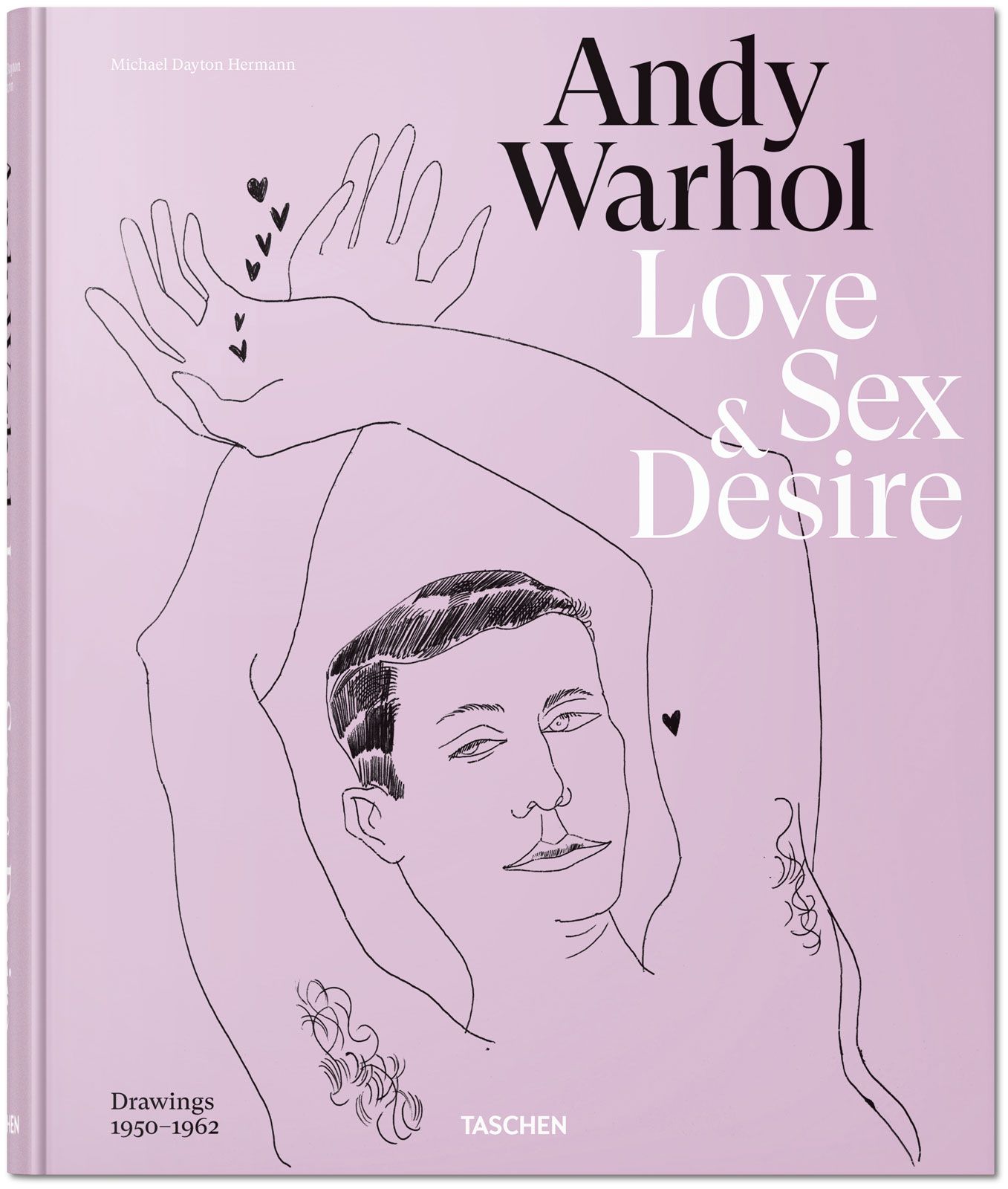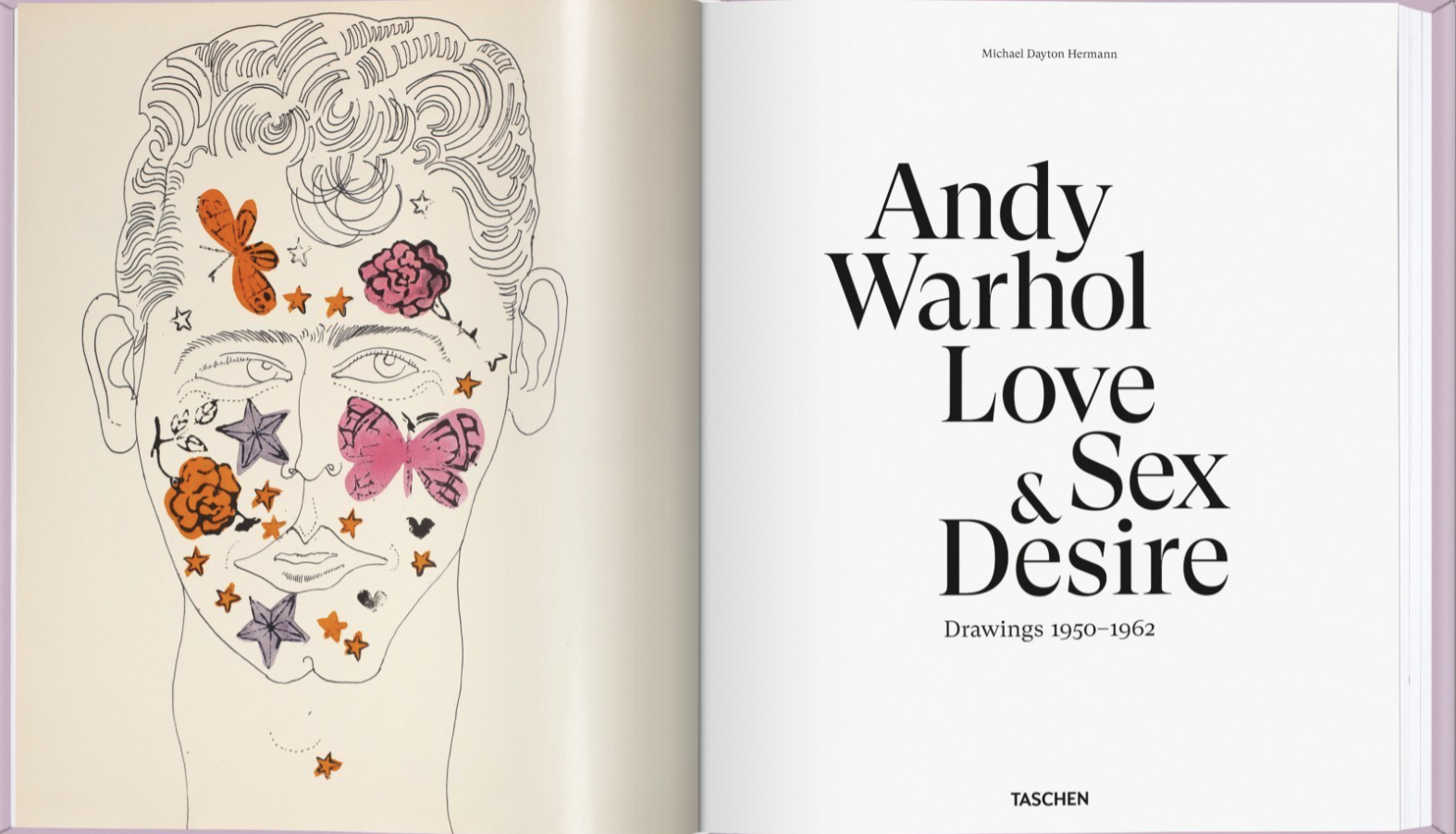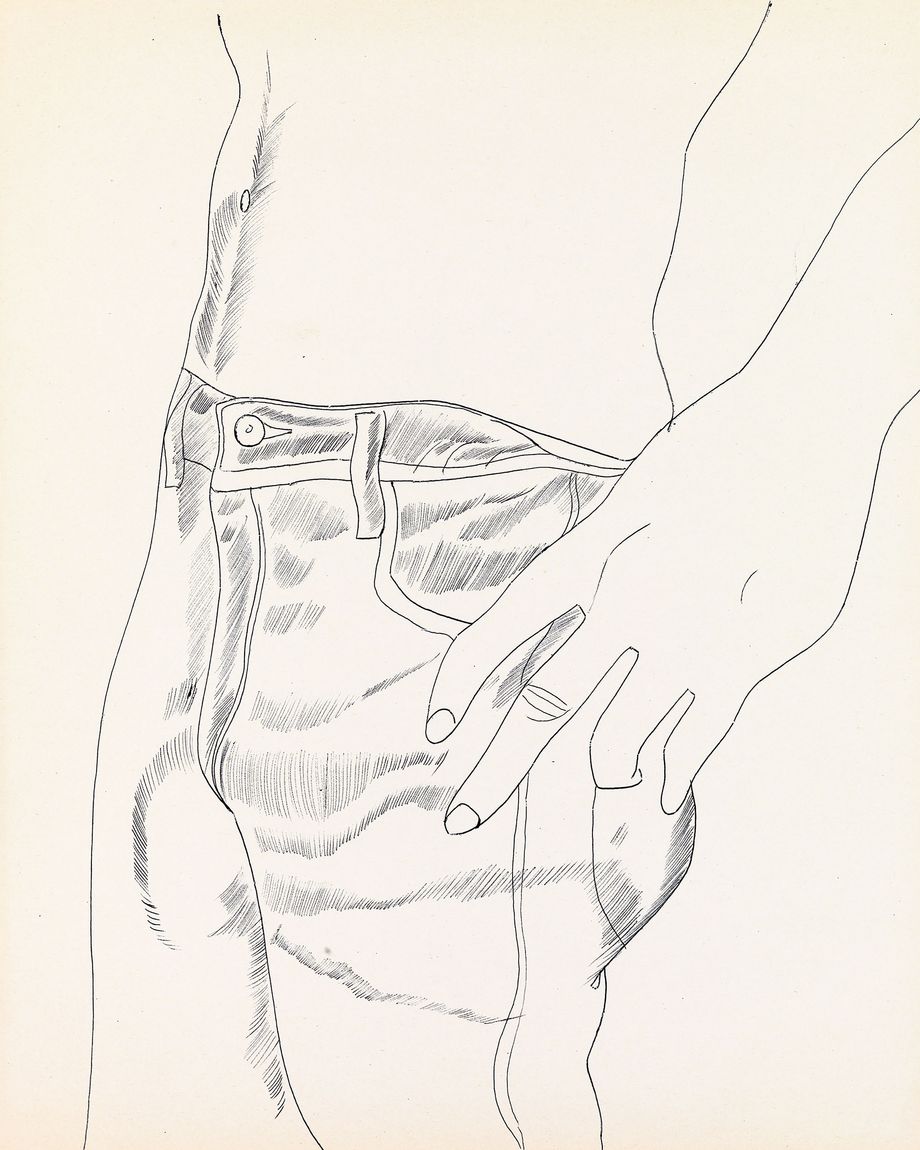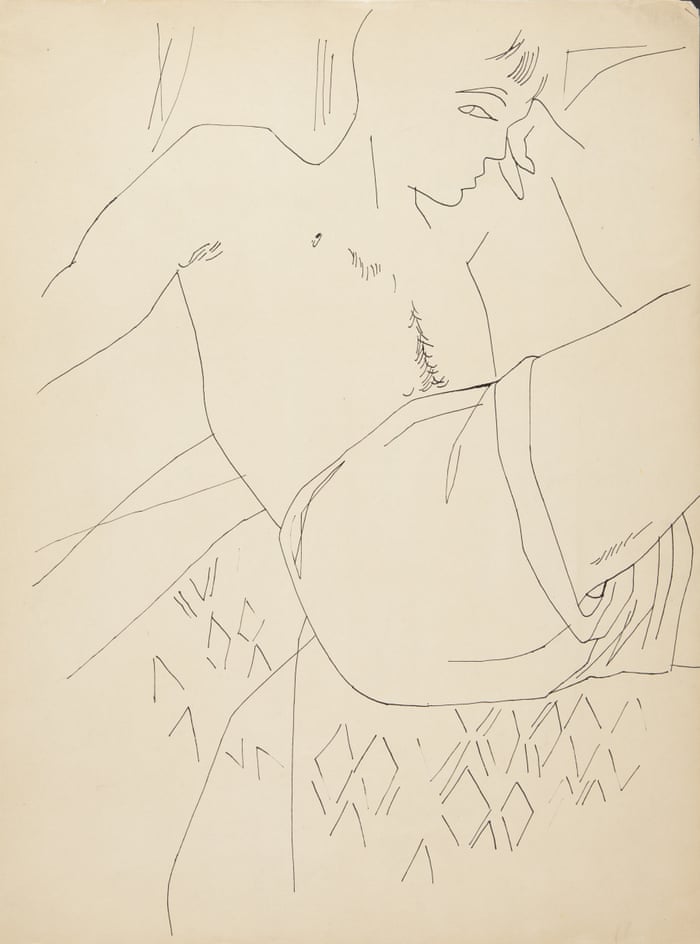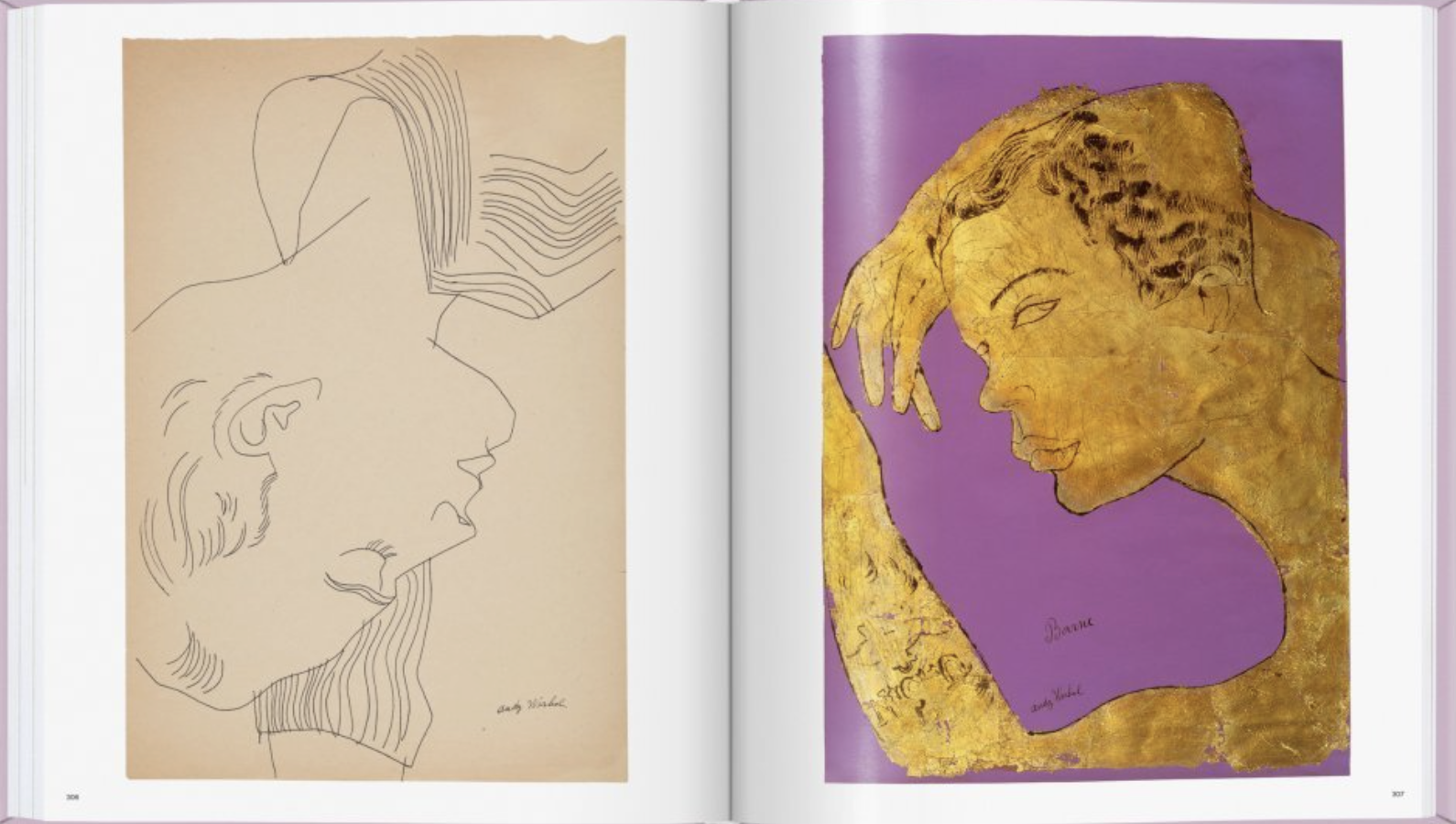[Most Recent Entries] [Calendar View]
Monday, January 11th, 2021
| Time | Event |
| 9:00a | 300 Rarely-Seen, Risqué Drawings by Andy Warhol Published in the New Book, Andy Warhol: Love, Sex, and Desire. Drawings (1950–1962)
It did not take Andy Warhol long to find the status he sought as a young man. Shortly after moving to New York City in 1949, he established himself as one of the highest paid freelance illustrators of the period. His whimsical, eye-catching line drawings for various luxury brands appeared in such high profile publications as Vogue and Harper’s Bazaar.
The sense of prettiness and play that animated his pictures of shoes, cats, and perfume bottles is evident in the 1000-some homoerotic drawings he produced during the same time, but those proved to be a tougher sell. In an era when sodomy was judged to be a felony in every state, full-frontal male nudity was considered obscene, and the art world was in the thrall of the macho Abstract Expressionists, Warhol had difficulty finding a gallery to show his gentle depictions of gay intimacy.
Finally, a personal connection at the Bodley Gallery on New York’s Upper East Side agreed to host a small exhibition, opening Studies for a Boy Book by Andy Warhol on Valentine’s Day 1956. The drawings were reminiscent of Warhol favorite Jean Cocteau’s sketches’ in both subject matter and cleanly executed line. His models were friends, lovers, assistants, and other scenemakers. Warhol’s friend, Robert Fleischer, a stationery buyer at Bergdorf Goodman’s, recalled:
Warhol’s ambition to publish a monograph of A Boy Book went unrealized during his lifetime, but 300 of the drawings appear in Taschen’s just-released Andy Warhol. Love, Sex, and Desire. Drawings 1950–1962. (You can purchase the book directly from Taschen here or on Amazon.) The collection also features essays by biographer Blake Gopnik and critic Drew Zeiba, as well as poems by James Baldwin, Thom Gunn, Harold Norse, Allen Ginsberg, and Essex Hemphill.
Warhol’s first studio assistant, antiquarian and illustrator Vito Giallo, remembered Warhol during this period: “He never considered himself a fine artist but he wished he could be. We often talked about that.” As Michael Dayton Hermann, who edited Andy Warhol. Love, Sex, and Desire. Drawings 1950–1962 observes:
Related Content: 130,000 Photographs by Andy Warhol Are Now Available Online, Courtesy of Stanford University Take a Virtual Tour of the Andy Warhol Exhibition at the Tate Modern Ayun Halliday is an author, illustrator, theater maker and Chief Primatologist of the East Village Inky zine. She most recently appeared as a French Canadian bear who travels to New York City in search of food and meaning in Greg Kotis’ short film, L’Ourse. Follow her @AyunHalliday. 300 Rarely-Seen, Risqué Drawings by Andy Warhol Published in the New Book, Andy Warhol: Love, Sex, and Desire. Drawings (1950–1962) is a post from: Open Culture. Follow us on Facebook, Twitter, and Google Plus, or get our Daily Email. And don't miss our big collections of Free Online Courses, Free Online Movies, Free eBooks, Free Audio Books, Free Foreign Language Lessons, and MOOCs. |
| 3:00p | See Devo Perform Live for the Very First Time (Kent State University, 1973) Kent State University is known as the site of two important events in American culture: the massacre of May 4, 1970, and the formation of Devo. When the National Guard shot thirteen students at a Vietnam War protest, it signaled to many the end of the youth-driven optimism of the late 1960s. It also motivated a group of musically inclined undergraduates to consolidate the band/conceptual art project they’d premised on the idea of “de-evolution.” Around that time, the group’s founders, art students Gerald Casale and Bob Lewis, met a keyboardist named Mark Mothersbaugh, who contributed some of the signature musical and comedic sensibilities of what would become Devo. “The band, or at least a band known as Sextet Devo, first performed at a 1973 arts festival in Kent,” writes Calvin C. Rydbom in The Akron Sound: The Heyday of the Midwest’s Punk Capital. Filling out that sextet were Casale’s brother Bob, drummer Rod Reisman, and vocalist Fred Weber. A handout for the show promises a series of “polyrhythmic exercises in de-evolution,” including a number called “Private Secretary,” footage of which appears above. “The group were all dressed oddly, Bob in scrubs, Jerry in a butcher’s coat, Bob Lewis behind the keyboards in a monkey mask, and Mark in a doctor’s robe,” writes George Gimarc in Punk Diary: The Ultimate Trainspotter’s Guide to Underground Rock, 1970-1982. “The audience was, at times, confused, amused, and some even danced.” Sextet Devo “would have been off the charts in most environments,” says Myopia, a retrospective volume on Mothersbaugh’s work. At the Kent Creative Arts Festival “the band actually fit within the spectrum of normal behavior, albeit at the far end of the scale.” But even their most appreciative viewers couldn’t have known how far the concept of de-evolution had to go, to say nothing of the pop-cultural heights to which the oddballs onstage would carry it. Just five years later, Devo would make their national-television debut as a quintet on Saturday Night Live, “de-evolving” the Rolling Stones’ “Satisfaction.” But they didn’t forget where they’d come from: nearly thirty years after their first show, they came back around to 1970 for a de-evolution of Crosby, Stills, Nash & Young’s “Ohio.” Related Content: The Mastermind of Devo, Mark Mothersbaugh, Presents His Personal Synthesizer Collection DEVO Is Now Selling COVID-19 Personal Protective Equipment: Energy Dome Face Shields Based in Seoul, Colin Marshall writes and broadcasts on cities, language, and culture. His projects include the Substack newsletter Books on Cities, the book The Stateless City: a Walk through 21st-Century Los Angeles and the video series The City in Cinema. Follow him on Twitter at @colinmarshall, on Facebook, or on Instagram.
See Devo Perform Live for the Very First Time (Kent State University, 1973) is a post from: Open Culture. Follow us on Facebook, Twitter, and Google Plus, or get our Daily Email. And don't miss our big collections of Free Online Courses, Free Online Movies, Free eBooks, Free Audio Books, Free Foreign Language Lessons, and MOOCs. |
| 7:48p | Coursera Offers $100 Off of Coursera Plus (Until January 20), Giving You Unlimited Access to Courses & Certificates
FYI: Between now and January 20, Coursera is offering a $100 discount on its annual subscription plan called “Coursera Plus.” Normally priced at $399, Coursera Plus (now available for $299) gives you access to 90% of Coursera’s courses, Guided Projects, Specializations, and Professional Certificates, all of which are taught by top instructors from leading universities and companies (e.g. Yale, Duke, Google, Facebook, and more). The $299 annual fee–which translates to 81 cents per day–could be a good investment for anyone interested in learning new subjects and skills in 2021, or earning certificates that can be added to your resume. Just as Netflix’s streaming service gives you access to unlimited movies, Coursera Plus gives you access to unlimited courses and certificates. It’s basically an all-you-can-eat deal. You can try out Coursera Plus for 14 days, and if it doesn’t work for you, you can get your money back. Explore the offer (before January 20, 2021) here. Note: Open Culture has a partnership with Coursera. If readers enroll in certain Coursera courses and programs, it helps support Open Culture. Coursera Offers $100 Off of Coursera Plus (Until January 20), Giving You Unlimited Access to Courses & Certificates is a post from: Open Culture. Follow us on Facebook, Twitter, and Google Plus, or get our Daily Email. And don't miss our big collections of Free Online Courses, Free Online Movies, Free eBooks, Free Audio Books, Free Foreign Language Lessons, and MOOCs. |
| 8:00p | New Documentary Sisters with Transistors Tells the Story of Electronic Music’s Female Pioneers “Technology is a tremendous liberator,” says Laurie Anderson in her voiceover narration for the new documentary Sisters with Transistors, a look at the women who have pioneered electronic music since its beginnings and been integral to inventing new sounds and ways of making them. “Women were naturally drawn to electronic music. You didn’t have to be accepted by any of the male-dominated resources. You could make something with electronics, and you could present music directly to an audience.” Technology as liberator may sound utopian to our jaded 21st century ears, accustomed as we are to focusing on tech’s misuses and abuses. But machines have very often been a means of social progress, just as when “bicycles promised freedom to women long accustomed to relying on men for transportation.” The creation and innovation of recording and broadcasting equipment deserves its own place in women’s history. Radio in particular gave women the opportunity to experiment with sound and reach millions who might not otherwise give them a hearing. The influence of BBC radio composers like Delia Derbyshire and Daphne Oram, for example, remains pervasive, and the electronic soundscapes they created for radio and television helped define the sonic world we now inhabit. It is a world, director Lisa Rovner tells AFI’s Malin Kan below, permeated by electronic music. “I can’t actually remember,” says Rovner, “a time when I wasn’t aware of electronic music. Electronic music penetrates pretty much every single aspect of my life since I was a kid, whether that’s stuff that’s on television or the video games that I played with my brother.” Her interest in the music’s “transcendent” qualities was first piqued, she says, at a rave. The film project happened to “check all the boxes” for her, with its focus not only on the electronic music women have made for over a century, but also on “the wider social, political and cultural context of the 20th century,” as the film’s site notes. Sisters with Transistors covers a range of composers, several of whom we’ve previously featured on Open Culture, including Derbyshire, Oram, Clara Rockmore, Bebe Barron, Maryanne Amacher, Eliane Radigue, Suzanne Ciani, Laurie Spiegel, and Pauline Oliveros. “The history of women has been a history of silence,” Rovner writes. “Music is no exception.” Or as Oliveros put it in a 1970 New York Times Op-Ed:
As Sisters with Transistors shows, new technologies broke that dependence for many women, including Oliveros, who provided us with a different answer to questions about the paucity of women composers. Why are there no “great” women in electronic music? Because you haven’t heard them yet. Learn their names and stories in the new documentary. via Hyperallergic Related Content: The Deeply Meditative Electronic Music of Avant-Garde Composer Eliane Radigue Two Documentaries Introduce Delia Derbyshire, the Pioneer in Electronic Music Daphne Oram Created the BBC’s First-Ever Piece of Electronic Music (1957) Hear Seven Hours of Women Making Electronic Music (1938-2014) Josh Jones is a writer and musician based in Durham, NC. Follow him at @jdmagness New Documentary Sisters with Transistors Tells the Story of Electronic Music’s Female Pioneers is a post from: Open Culture. Follow us on Facebook, Twitter, and Google Plus, or get our Daily Email. And don't miss our big collections of Free Online Courses, Free Online Movies, Free eBooks, Free Audio Books, Free Foreign Language Lessons, and MOOCs. |
| << Previous Day |
2021/01/11 [Calendar] |
Next Day >> |
